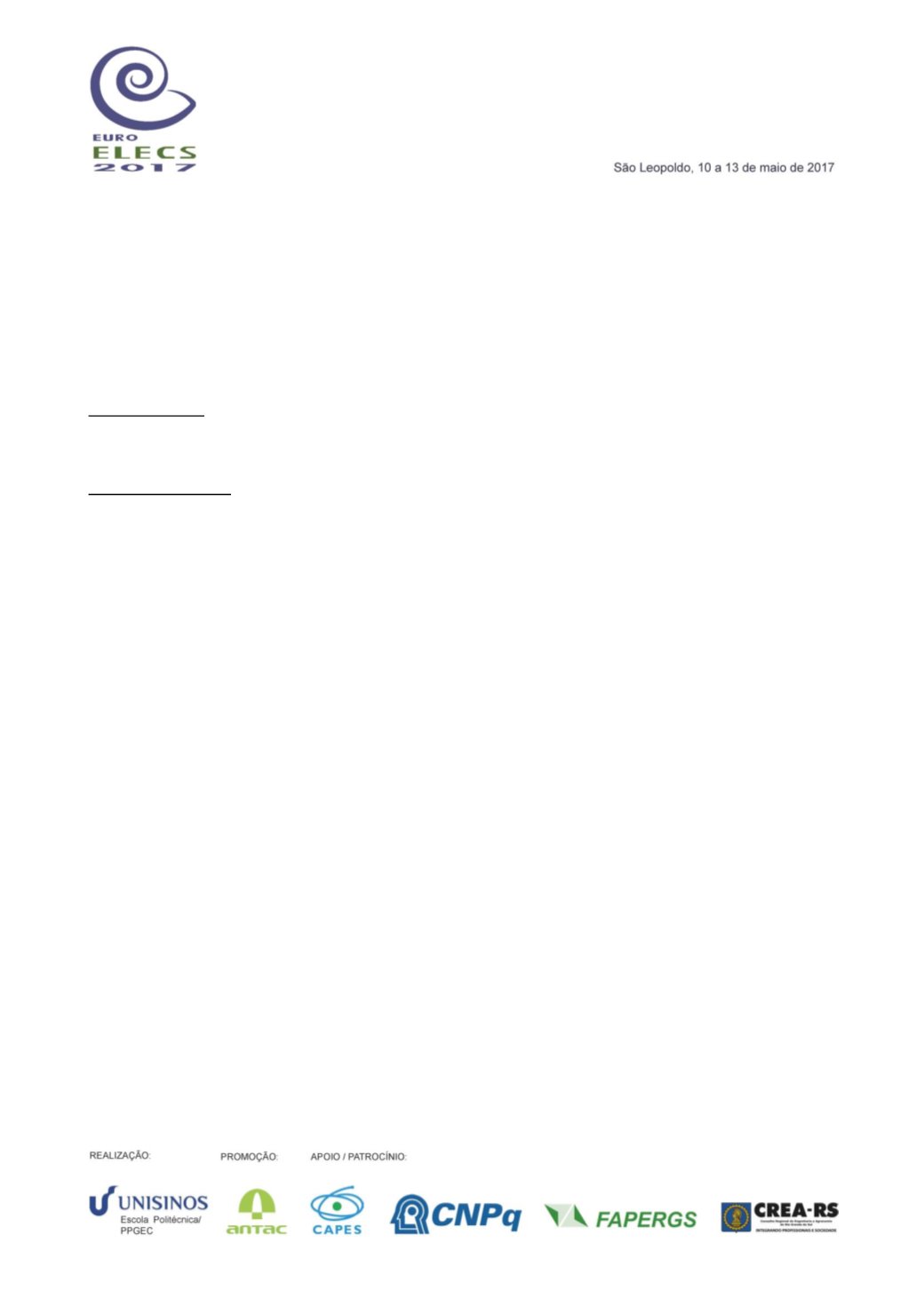

93
muito expressivo, em média de 0,5
C, mas mantendo-se abaixo da temperatura externa. No
entanto, ao se comparar o mesmo ambiente sem sombreamento e após a instalação das
prateleiras, há uma redução na ordem de 0,7
C, dependendo da altura de instalação do
dispositivo, e também podendo-se melhorar este desempenho alterando-se a largura do mesmo.
Conclui-se, portanto, que este tipo de protetor solar é eficiente, quando comparadas as
temperaturas internas do ambiente sem nenhum tipo de protetor solar, com as temperaturas após
o uso das prateleiras, percebeu-se uma amortização das temperaturas do ar interno.
REFERÊNCIAS BIBLIOGRÁFICAS
Norma Técnica
ASSOCIAÇÃO BRASILEIRA DE NORMAS TÉCNICAS.
NBR 15575-1: Edificações
habitacionais – Desempenho – Parte 1: Requisitos gerais
, Rio de Janeiro, 2013. 60p.
Artigo de periódico
BADER, S.
High-performance façades for commercial buildings
. Austin, Texas: The University
of Texas at Austin - School of Architecture, 2010.
CHO, J.; YOO, C.; KIM, Y. Viability of exterior shading devices for high-rise residential buildings :
Case study for cooling energy saving and economic feasibility analysis.
Energy & Buildings
, v.
82, p. 771–785, 2014.
FAJKUS, M.
Superficial skins? Super Skins? Shading structures and thermal impact
analysis.
In: Proceedings Advanced Building Skins - Energy Forum. p. 23-27. Bressanone, Italy:
2013
GAGO, E. J. et al. Natural light controls and guides in buildings. Energy saving for electrical
lighting, reduction of cooling load.
Renewable and Sustainable Energy Reviews,
n. 41, p. 1-13,
2015.
HOPKINSON, R. G.; PETHERBRIDGE, P.; LONGMORE, J.
Iluminação Natural.
2ed. Lisboa:
Fundação Calouste Gulbenkian, 1966.


















